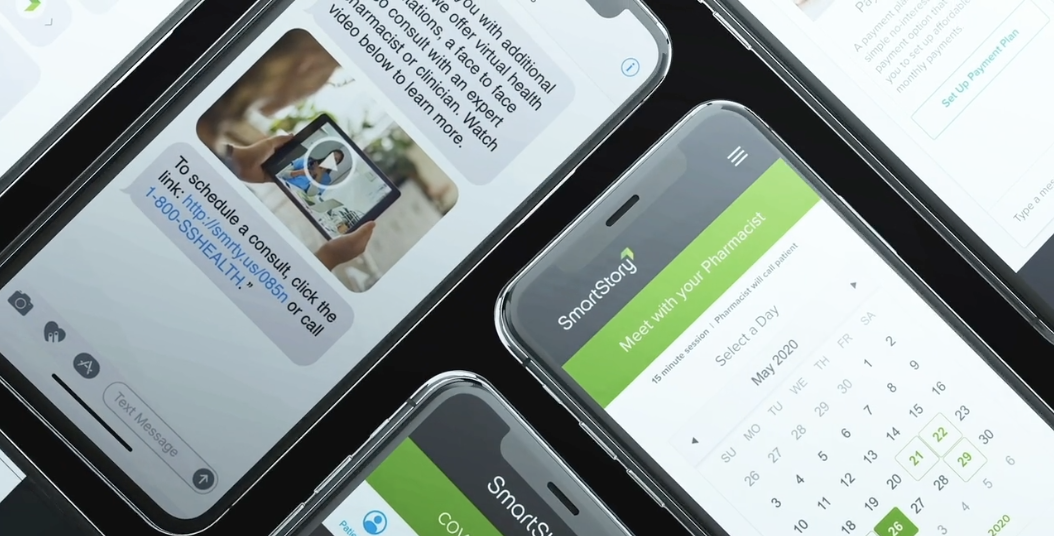Three Key Requirements for Creating Dynamic, Personalized Digital Experiences

Posted By: Chris Minor October 9th, 2020 5 minute read
Most digital engagement platforms promise experience personalization, but rely upon complex, cobbled systems and stagnant webpages. Today’s audiences prefer more dynamic experiences that deliver dynamic omnichannel personalization. The three key capabilities required for dynamic, personalized experiences are: 1) omnichannel communications; 2) dynamic webpages (or SmartPages) and; 3) automated journey-building with rich data collection.
Digital Distraction Paradox: More is Less
Let’s face it. The digital engagement industry has a fatal flaw: the growing power of distraction. The more people and content connect digitally, the greater the power of distraction.
 Most organizations don’t have the budget to imitate the likes
of Facebook, Google and Apple digital experiences, so they cobble together a
mix of platforms that are almost adequate.
They face an underfunded, uphill
battle because they’re dependent upon technical debt: a host of cobbled marketing
and demand gen tools that have “evolved” over the last fifteen years through a
patchwork of integrations.
Most organizations don’t have the budget to imitate the likes
of Facebook, Google and Apple digital experiences, so they cobble together a
mix of platforms that are almost adequate.
They face an underfunded, uphill
battle because they’re dependent upon technical debt: a host of cobbled marketing
and demand gen tools that have “evolved” over the last fifteen years through a
patchwork of integrations.
While
the digital world grows increasingly powerful, the traditional engagement tools
grow increasingly complex… and costly. The old world requires IT to build engagement
journeys, the new world can generate journeys in minutes with minimal technical
skills.
Traditional
email and text response rates have been dropping for years, raising the stakes
for content as short form video becomes increasingly viral, in part thanks to
the emerging power of push algorithms. The power of platforms like TikTok are in its
abilities to deliver the right content to willing audiences, including those
who frequently opt-out of various “conditioning” programs driving people to
static, impersonal campaigns that only seem personal to the marketing teams
blasting them.
 And the
personalization stakes are high per a McKinsey Report: “Personalization can reduce acquisition costs by as
much as 50 percent, lift revenues by 5 to 15 percent, and increase the
efficiency of marketing spend by 10 to 30 percent.”
And the
personalization stakes are high per a McKinsey Report: “Personalization can reduce acquisition costs by as
much as 50 percent, lift revenues by 5 to 15 percent, and increase the
efficiency of marketing spend by 10 to 30 percent.”
So how does
digital engagement move forward? With three revolutionary capabilities:
1) Omnichannel communications;
2) Dynamic, personalized webpages; and
3) Automated journey-building with rich data collection.
Omnichannel
The rise of SMS/text has helped increase digital engagement. Yet pushing email strategies to text can erode brand equity at digital speed. In short, without personalization, omnichannel is a dead end. Marketers across multiple industries, from health care to real estate, have added increasingly sophisticated personalization, albeit to static web content that really isn’t personalized. It’s a transparent, incremental leap to sophisticated customers.
Dynamic, personalized webpages
Very few organizations have the dynamic personalization capability, despite the engagement power. The real problem is the technical debt from the evolutionary cobble. Doing it right requires considerable data collection within the context of various compliance/privacy standards, content libraries, and a robust journey-building capability. Some of the most powerful digital engagement solutions with this level of dynamic personalization are very expensive and require massive investments of time and resources to get to value.
Automated journey-building with rich data collection
Dynamic personalization without the ability to build and
adjust personal engagement journeys is a dead end. Requiring IT pros to set up
these journeys can be expensive and cumbersome. Real-time, rich data collection
brings the opportunity to quickly adjust journeys, so your team wants to be
able to “drag and drop” experiences in response to engagement statistics and
polling data. In the future expect AI algorithms to drive powerful, immersive
engagement.
The Digital Journey is Personal. And each of us are more than mere personas.
I’ve been
involved with marketing and demand gen for decades. I’ve been an alpha tester
and innovator across several platforms, including seeing my team win awards for
predictive analytics years ahead of some current platforms. I’ve watched the
evolution of marketing automation from creating engagement to manifesting
discontent. As marketers, we can fix this.

Feel free to contact us and start a dialogue.
